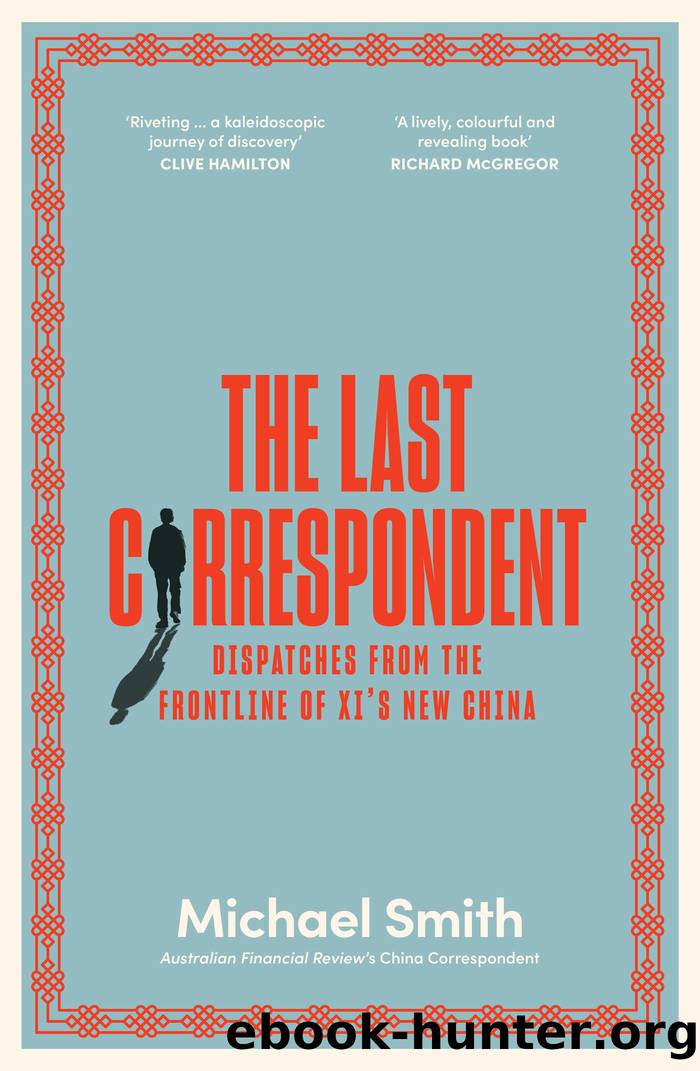The Last Correspondent by Michael Smith

Author:Michael Smith [Michael Smith]
Language: eng
Format: epub
Publisher: Ultimo Press
Published: 2021-04-05T00:00:00+00:00
I never expected to find the ârealâ re-education camps on my Chinese government-sponsored âfact-findingâ mission to Xinjiang. After some moral soul-searching about whether going was the right thing to do or not, my editors and I concluded that it was the closest I was going to get to what was happening there. At the very least, it would be interesting to see how the Chinese government wanted to present the situation. I boarded a flight for Urumqi with little information about the week ahead. The State Council refused to release the itinerary until I landed. As in most dealings with the Chinese government, it was all about control. I was part of a group of 24 journalists from all over the world, including Saudi Arabia, Russia, India, Pakistan, Bangladesh, Egypt, Iran, Uzbekistan, and Kyrgyzstan. We were ferried around the city in two large coaches and treated like visiting dignitaries. On the first day, we started noticing there was no traffic on the six-lane highways around the city. The roads had been closed off. There were police cordons everywhere. It was unclear whether this was for our personal safety or to keep us away from the general population. We were repeatedly assured there had not been a terrorist incident for 30 months, but the local authorities were still clearly taking no chances.
Our first stop was the Exhibition on Cases of Major Terrorist Attacks and Violent Crimes in Xinjiang. It was a macabre museum housed inside a giant convention centre filled with thousands of seized guns, explosives, and knives. Disturbingly, the walls were lined with images of mutilated children and screens showing videos of beheadings and slow-motion footage of bullets piercing skulls. There was no holding back on the shock value and the message was clear. âExtremism, separatism and terrorism have severely jeopardised the national security, and become the immediate and realistic threats to the social stability of Xinjiang,â a placard on the wall read. This was Chinaâs way of justifying the mass indoctrination of one million people. But our hosts were also hammering home another message. Ethnic Uighur culture was alive and well. It was not being stamped out. The next destination was the enormous domed lobby and stadium-sized worship hall of the Xinjiang Islamic Institute. We were taken into a classroom where rows of men were studying Islamic theology. They were all wearing the traditional doppa caps originating from Central Asia. One of the other journalists noted all the hats looked brand-new. It was a common theme on the trip. We visited a succession of textile factories where rows of women sat behind gleaming new sewing machines next to neatly stacked piles of tracksuits. I had visited dozens of factories in China before and these places felt like a film set. One day, we went to a factory and asked if there were any Uighurs working there we could interview.
âOnly one, but it is her day off,â the factory boss replied.
âCould we go and interview her?â
âYes, you can. She lives close by.
Download
This site does not store any files on its server. We only index and link to content provided by other sites. Please contact the content providers to delete copyright contents if any and email us, we'll remove relevant links or contents immediately.
China Rich Girlfriend by Kwan Kevin(4298)
The Silk Roads by Peter Frankopan(4275)
Annapurna by Maurice Herzog(3302)
Full Circle by Michael Palin(3272)
Hot Thai Kitchen by Pailin Chongchitnant(3217)
Okonomiyaki: Japanese Comfort Food by Saito Yoshio(2629)
The Ogre by Doug Scott(2506)
City of Djinns: a year in Delhi by William Dalrymple(2436)
Photographic Guide to the Birds of Indonesia by Strange Morten;(2408)
Vietnam, Cambodia, Laos & Northern Thailand by Lonely Planet(2321)
Tokyo by Rob Goss(2294)
Tokyo Geek's Guide: Manga, Anime, Gaming, Cosplay, Toys, Idols & More - The Ultimate Guide to Japan's Otaku Culture by Simone Gianni(2243)
Everest the Cruel Way by Joe Tasker(2135)
Discover China Travel Guide by Lonely Planet(2120)
Iranian Rappers And Persian Porn by Maslin Jamie(2101)
China (Lonely Planet, 11th Edition)(2037)
Lonely Planet China(2032)
China Travel Guide by Lonely Planet(1994)
Top 10 Dubai and Abu Dhabi by DK Travel(1992)
